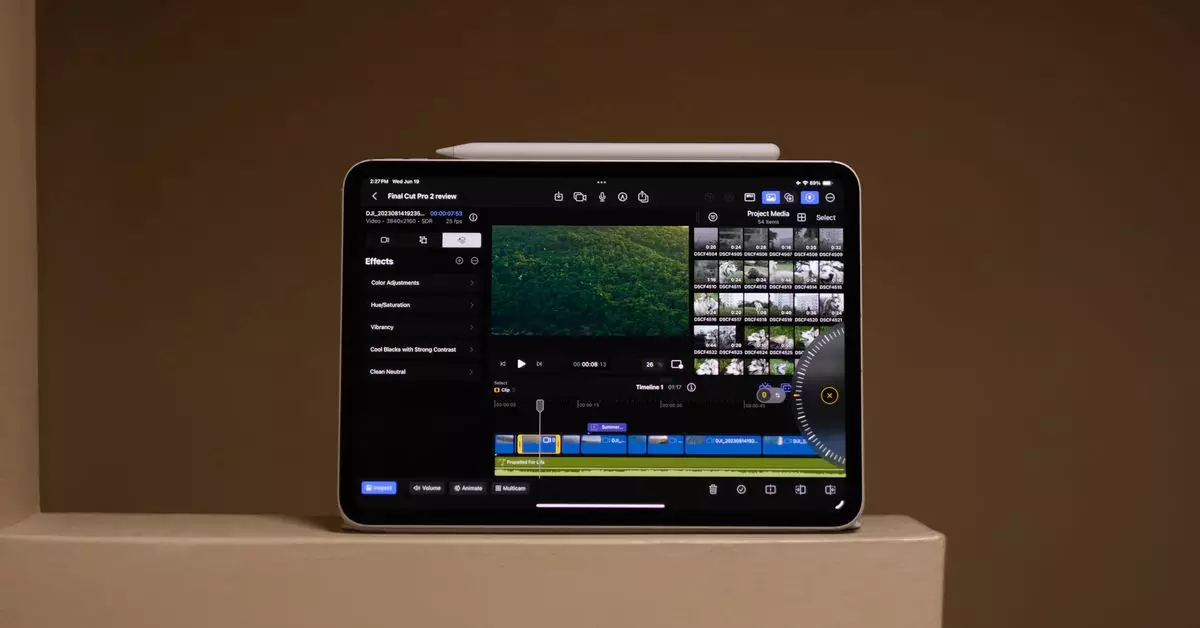As a supervising video producer with over a decade of experience, my time editing in the newest version of Final Cut Pro for the iPad was met with a mix of frustration and joy. While the new version, confusingly named “Final Cut Pro for iPad 2,” offers some new features like the Final Cut Camera app for iPhones and iPads, the overall editing tools are still limited. For many professionals, the tools in the original release of this app last year were just too restricted for daily use. Despite some improvements, such as Live Multicam support, there are still glaring omissions like compound clips, folders, adjustment layers, post stabilization, and more. The lack of these essential features can be a hindrance and lead to creative decisions being influenced by the software’s shortcomings.
One of the standout features in this year’s update is the addition of external hard drive support, a much-needed addition that was absent in the previous version. However, this addition highlights the broader issue with file management in Final Cut Pro for iPad. All media files must reside within the FCP Library files, stored on either the internal or external drive. This limitation means that media cannot be split across multiple drives or cloud storage, leading to constant duplication of files. Furthermore, the inability to import complete folders, organize files into separate folders, or bins within the app adds to the frustration of managing media assets efficiently.
Another new feature unique to the iPad version is Live Drawings, allowing users to draw animations directly onto clips using an Apple Pencil. While this feature integrates well with the Pencil, there is still room for improvement in terms of maximizing the Pencil’s capabilities for editing tasks. Additional features like programming haptic feedback for editing functions or enhancing the editing workflow with the Pencil could make the tool more versatile and efficient. However, the lack of fundamental video editing features like coloring tools, project sharing between machines, and 360 video support continues to limit the app’s potential for professional use.
Despite the shortcomings and missing features, Final Cut Pro for iPad continues to hold its ground in the competitive mobile video editing market. While apps like CapCut, DaVinci Resolve, and Lumafusion offer robust features and functionalities that Final Cut Pro lacks, the overall experience of using Final Cut on the iPad is commendable. Apple’s “touch-first” approach to the app provides an immersive editing experience, making editing with hands more intuitive and enjoyable. Although the app falls short in terms of advanced editing tools and features, the focus on creating a unique touch-based editing experience sets it apart from other mobile editing apps.
Final Cut Pro for iPad has made some strides in improving its features and functionality with the addition of Live Multicam support and external hard drive support. However, the app still lacks essential editing tools and features that are standard in desktop editing software. The challenges in file management, limited editing capabilities, and competition from other mobile editing apps pose significant hurdles for Final Cut Pro’s success. While the touch-first approach provides a unique editing experience, Apple must address the missing features and enhance the overall functionality of the app to cater to the needs of professional video editors. With the right improvements, Final Cut Pro for iPad could thrive as a capable and touch-first editing solution in the future.


Leave a Reply